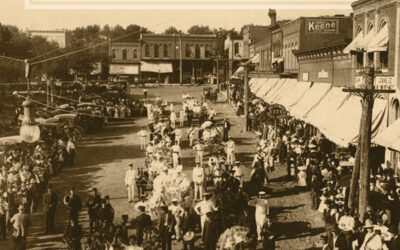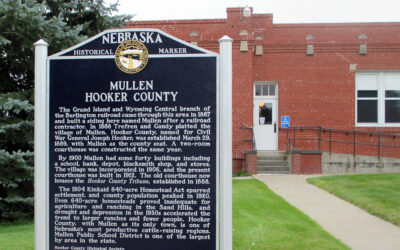In the latter 1930s Richardson County in Nebraska’s southeast corner was the scene of feverish excitement. The Falls City Journal announced November 24, 1938, that oil drilling at three area sites was underway. Potential oil and gas land had been leased by several groups and individuals. The small Pawnee Royalty Company had obtained oil from its Boice well, according to the Journal of November 6, 1939.
Imagine the excitement this news generated after years of economic depression. People wondered if Nebraska might become an oil state like Texas or Oklahoma.
The Boice well was the first producing well in southeast Nebraska. There were no oil refineries in Richardson County, and the crude oil produced was trucked to the Searle Refining Company of Omaha. The Pawnee Royalty Company drilled the new Bucholz well and obtained oil similar in quality to that derived from the Boice well. The Bucholz was soon flowing at the rate of 330 barrels per day. It qualified for the cash prize offered by the Nebraska Legislature to the first oil well in the state producing fifty barrels of oil for sixty consecutive days.
A flurry of activity over oil leases followed the successful pumping at the Bucholz as larger companies and more experienced oil men tried to capitalize on the small boom. The Skelly Company sent in a crew of fifty-five. The search for oil expanded throughout Richardson County, to the south into Missouri, and on the north about fifty miles into the area around Peru.
However, the oil boomlet was encountering difficulties, including a lack of local refinery facilities and low demand for the oil produced. By October 5, 1940, the Journal reported that two refineries were operating in Falls City and that a third was being built in Salem. In the fall of 1940 there was an increase in the production of individual wells and in the number of wells drilled—part of the drillers’ strategy for heading off nearby competitors who might be draining the same pool of oil that was feeding their wells. In an effort to prolong the life of the oil field, well owners finally restricted production voluntarily.
The last month in 1941 witnessed a decline in Richardson County’s oil production, and each month in 1942 saw a continuation of the same trend. The oil fields were being pumped dry. The county’s first oil boom had been brief, lasting only three years. However, it did stimulate Nebraska’s interest in oil and developed new economic ventures in the area.



